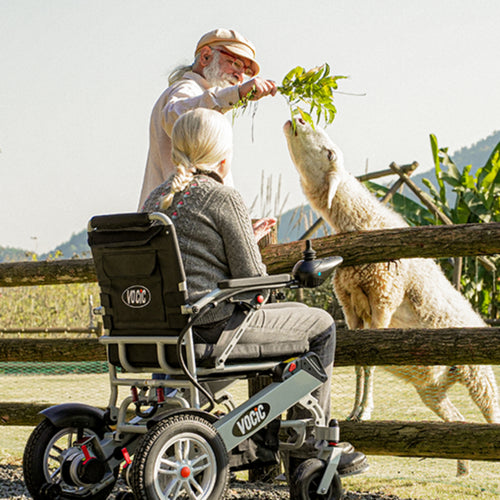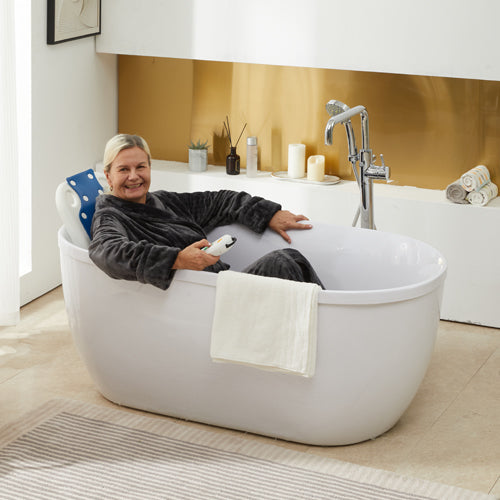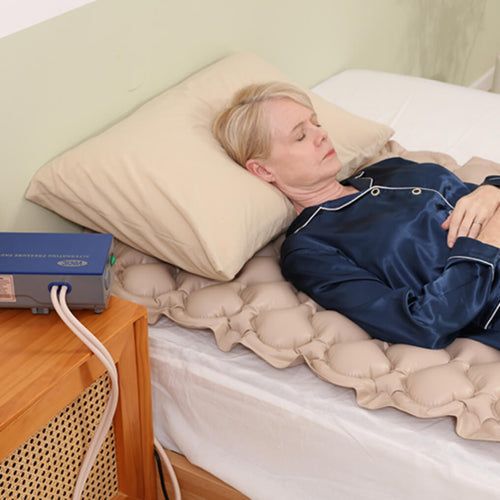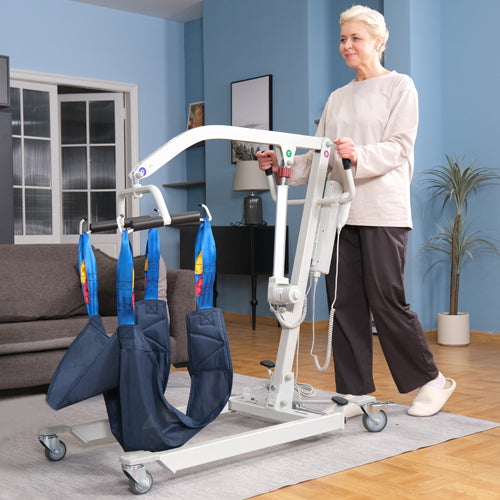If you face mobility issues due to injury, disability, or medical condition, mobility aids can improve your independence and quality of life. The right assistive device can not only transform your daily activities but also give you greater freedom and participation in all aspects of your life.
We explore some of the various types of mobility aids you can choose to suit your needs and lifestyle. And discuss how to choose the best mobility aid to match your personal and social aspirations to live an active, fulfilling life.
How Can Mobility Aids Improve the Quality of Life of Young People?
Different types of mobility aids can not only improve the quality of life for young people but also provide them with both physical and psychological benefits:
-
Improved Independence: If you have limited mobility, mobility aids such as wheelchairs, scooters, and walkers can give you the independence you need to get around. They can enable you to participate more actively in daily activities and social interactions, such as walking around the park with an injured spine.
-
Enhanced Accessibility: Mobility aids can help you access places that might otherwise be inaccessible due to limited mobility. For example, a custom wheelchair can help you navigate different floors of your workplace, allowing you to fully participate in all professional and social activities.
-
Safety and Injury Prevention: Mobility aids such as canes or crutches provide you with the necessary support to safely navigate various terrains, such as icy sidewalks or uneven trails, reducing your risk of falls and injuries.
-
Social Inclusion: Mobility aids can enhance your ability to participate in social, educational, and employment opportunities, preventing the isolation that people with limited mobility often experience. Just like using a manual wheelchair can help you actively participate in community activities, enhancing your mental health and well-being.
-
Reduced Pain: If you experience pain when walking or standing, a walker can provide you with support and help you maintain correct posture, reducing your pain levels. If you are a dancer with chronic knee pain, using a support brace during rehearsal can reduce your discomfort and increase comfort during performance.
-
Energy savings: Mobility aids such as wheelchairs or scooters can save you energy by minimizing the physical effort required to move. If you have a medical condition such as MS, they can allow you to participate more fully in activities such as photoshoots without excessive fatigue.
What Are the Types of Adaptive Equipment for Young People?
Young people can use a variety of different types of adaptive equipment, all of which can help them move around, carry out daily activities, and improve accessibility.
Wheelchairs
Whether you choose a manual wheelchair or an electric wheelchair, they can help you if you have limited walking ability. So, you can use a manual wheelchair to get around the school independently, or a powered wheelchair can allow you to participate in community activities effortlessly.

Walkers
If you need stability while walking, a walker can provide you with the necessary support. After surgery, you can walk safely at home using a standard walker. Or, if you enjoy daily walks around the neighborhood but need to rest in a seat periodically, you can choose a rolled walker to accompany you.
Crutches
Crutches can help you maintain balance and mobility, especially after an injury. For example, if you are an athlete recovering from a sports injury, underarm crutches can help you walk through school without putting weight on your injured leg. If you have a chronic condition that affects your mobility, forearm crutches may provide you with a comfortable daily commute.
Canes
If you are recovering from minor foot surgery, a single-point cane may help you maintain balance during short walks. If you have severe balance issues, perhaps as a result of a stroke, a quad cane may be your best option for returning to school or work.
Knee Scooters
If you are recovering from a lower extremity injury, a knee scooter is a great option. If you have a broken foot, a knee scooter can help you keep up with school activities without limiting your independence. If you love outdoor festivals but are recovering from lower extremity surgery, an all-terrain knee scooter can keep you active and participating in your favorite activities.
Mobility Scooters
You can use a travel scooter to smoothly navigate through an airport or a 4 wheel scooter to handle daily errands around your neighborhood, especially when a disease like MS causes fatigue. A heavy-duty scooter can allow you to comfortably explore nature trails despite limited mobility if you are more of an outdoor adventurer.

How Do You Choose Mobility Aids for Young Adults?
Are you wondering how to choose a mobility aid that reflects your young person? You can base your choice on the following points so that you can be sure that it will improve your quality of life:
-
Consider Your Desired Mobility Needs: First, look at what mobility limitations and needs you have. Determine whether you need a short-term recovery or long-term mobility aid. For example, if you are temporarily injured, you may choose crutches, while if you need long-term mobility assistance, you may consider a wheelchair.
-
Consult a Healthcare Provider: Consult a healthcare professional such as a physical therapist, occupational therapist, or orthopedist. They can assess your condition and recommend the most appropriate type of mobility aid based on your physical condition and mobility difficulties.
-
Consider Your Lifestyle: If you are a student who needs to navigate a large campus, a compact and easy-to-maneuver electric scooter may be your best choice. If you are active and enjoy outdoor activities, an adaptive bike or all-terrain wheelchair may enhance your participation.
-
Adjustability and Comfort: Choose an adjustable mobility aid to adapt to your changing needs. It is also important to choose a mobility aid that is comfortable to use. So look for features such as padded seats, ergonomic handles, and breathable materials.
-
Safety Features: If you need a rollator walker, then you need to consider its safety when choosing a walker. Make sure the device is equipped with necessary safety features such as brakes, non-slip handles, and a stable base to prevent accidents, especially on uneven terrain.
-
Portability and Storage: Consider the ease of transporting and storing the walker, especially if you travel frequently or have limited storage space. Lightweight, foldable models may be more suitable for easy use in different environments.
-
Budget and Insurance: Consider the cost of the walker and check what your insurance covers. Some high-end 4-wheel walkers are expensive, so it is important to understand what financial support is available for purchasing these devices.
Conclusion
The right mobility aid can enhance your independence, safety, and participation in daily activities, in addition to your mobility. However, the ideal mobility aid for you depends on your specific needs, lifestyle, and level of activity. When choosing, consider not only the type of mobility aid but also its key features such as adjustability, comfort, safety, and portability. In addition, consulting with a healthcare professional can help you find an assistive device that can be smoothly integrated into your life, enabling you to maintain an active and engaged lifestyle despite your mobility limitations.
We at VOCIC offer a wide range of mobility aids for teenagers, from different types of walkers and wheelchairs to electric scooters, ensuring you can find the right tool for your needs. In addition, our mobility aids are also designed for seniors to help them increase their independence and lifestyle. Explore our range now!









